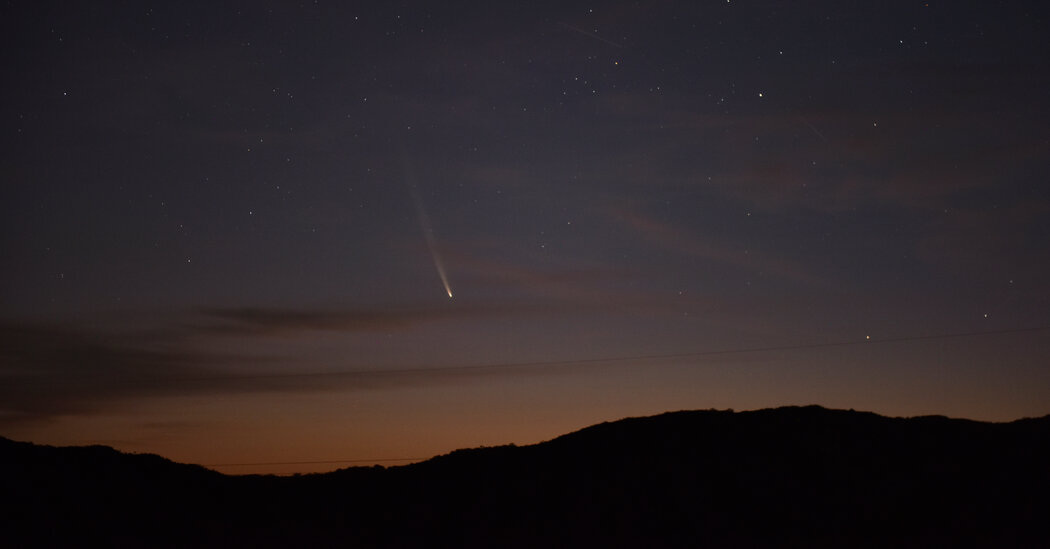Comet Tsuchinshan-ATLAS is nearing Earth and getting brighter.
Look up, stargazers: A comet discovered last year is getting brighter as it makes its closest pass by Earth later this week, and this could be humanity’s last chance to see the comet before it disappears into the cosmic depths.
The celestial visitor is Comet Tsuchinshan-ATLAS, or C/2023 A3 to scientists. Astronomers are expecting the comet to be especially vivid, possibly rivaling the brightness of Jupiter in the night sky. The comet is expected to be at its brightest on Wednesday and potentially visible through the end of the month.
“This one is, I would say, a once-in-a-lifetime opportunity,” said Gianluca Masi, an astrophysicist based in Italy and the scientific director of the Virtual Telescope Project. “This comet is for everyone.”
What is Comet Tsuchinshan-ATLAS?
Tsuchinshan-ATLAS, like all comets, is a frozen chunk of leftover material from the birth of the solar system. The comet begins to melt as it nears the sun, causing the ball of ice to sprout a diffuse tail.
The comet was first detected by astronomers at the Tsuchinshan Observatory, known also as Purple Mountain Observatory, in China on Jan. 9, 2023. A month later, the comet was independently spotted by observers using the Asteroid Terrestrial-Impact Last Alert System, or ATLAS, telescope in South Africa.
Hence, its name, Tsuchinshan-ATLAS. The comet comes from the Oort Cloud, a realm filled with frozen debris on the outer edge of our solar system. Initial observations suggest that the comet may orbit the sun once every 80,000 years.
